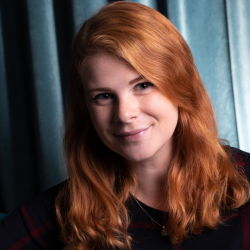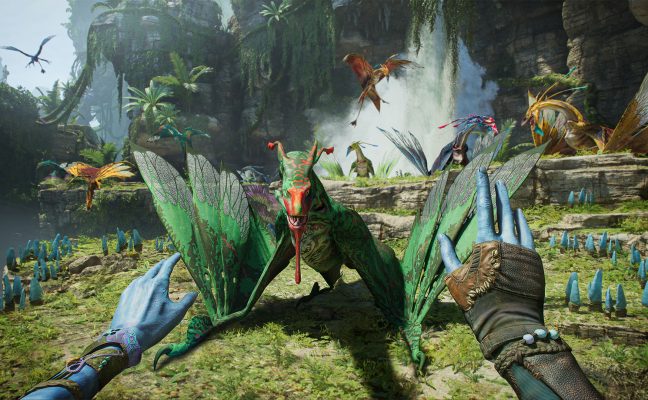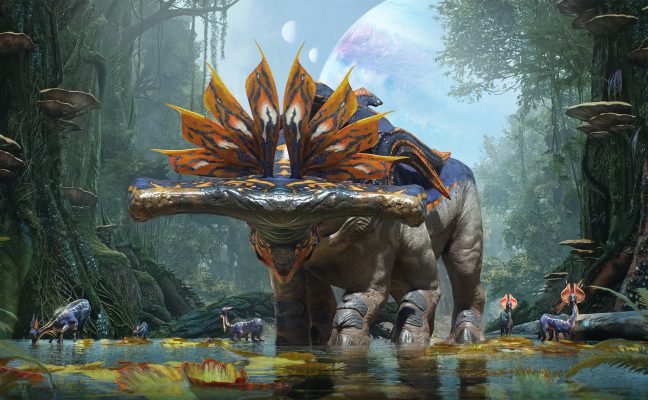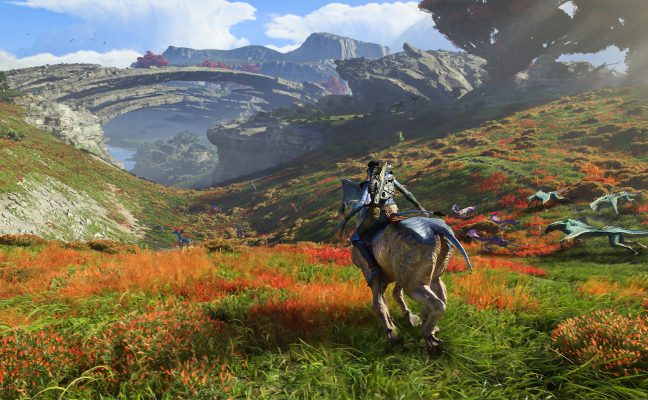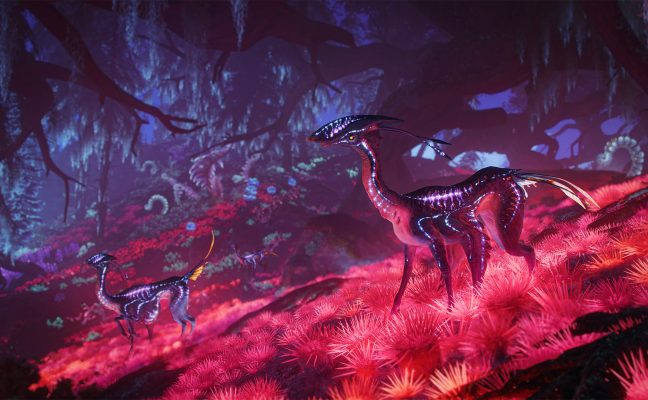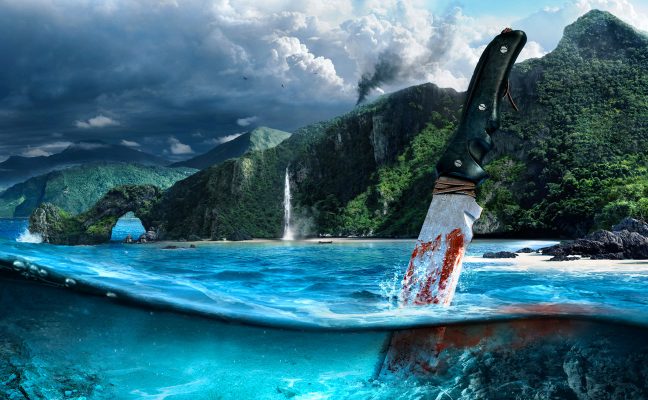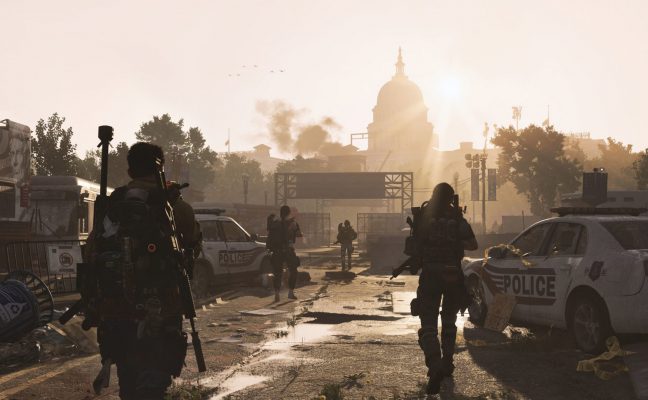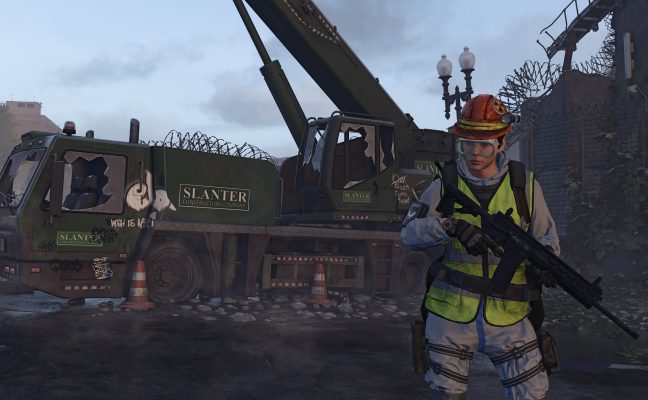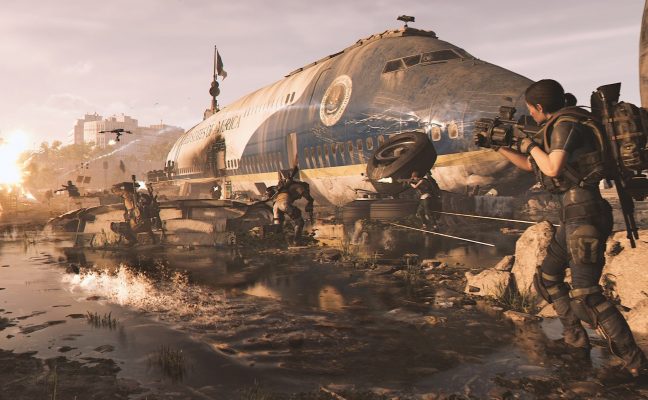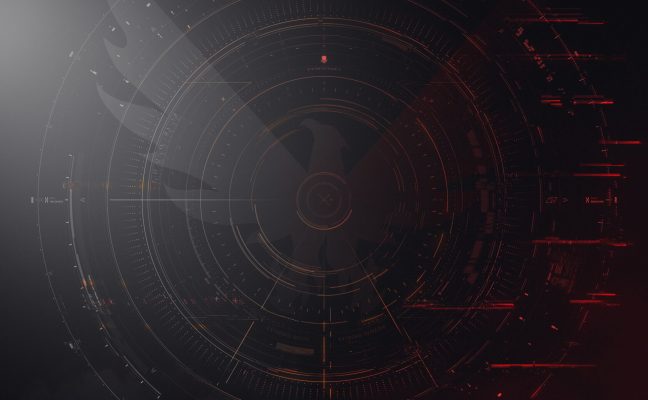Cinematics is the marriage between movies and games that helps build the game’s story and world. But what is it like to work with cinematics at a game studio like Massive? We sat down with Amanda and Abel in the Massive cinematics team to talk about how they fell in love with the profession, the process of creating cinematics, and the importance of challenging yourself.
Characters in different angles, drone shots of The Division 2’s settlements, and colorful art cover the walls of the Cinematics team’s work area in the studio.
We meet Amanda Hakim, Junior Cinematic Artist and Abel Vazquez Dopazo, Cinematic Environment Artist.

Together with their colleagues, they create cutscenes and cinematics for our games. According to Abel, working with cinematics is a perfect mix of tech and art, something that suits both him and Amanda well.
“I finished a master’s degree in Biotech engineering, but then realized that I didn’t want to spend my life in a lab,” explains Amanda. “Art was my passion and what I wanted to do, but I never really understood – or believed! – that it was something I could do for a living.”
Once I started studying I found that I really enjoyed 3D. It’s a cool mix of technology, science and art.
A friend of hers then got into the Game Assembly in Malmö, and Game Art caught Amanda’s eye.
“Once I started studying I found that I really enjoyed 3D. It’s a cool mix of technology, science and art,” she says, and Abel nods his head in agreement.
“I was about to go into engineering when I discovered you could make a career out of making games. Since I’ve always liked drawing and art, I started playing around in some online programs. But just like Amanda, I never thought I could make a living out of it,” he says.
EVERYONE’S AN EXPERT
Abel then started researching and learning on his own, teaching himself the basics with the help from many people in online art communities, before doing a BA in Games Design in the UK. It was while studying for this degree that he learned about Massive
“I knew a lot of people working in the Environment Art team here, and they spoke so highly about Massive that I just thought to myself ‘I have to work there!’. At the time, I didn’t really know about cinematics, but here we are,” he says laughing.

I love that our team consists of many different specializations, from infrastructure support with tools and pipeline, to VFX, Lighting, and animation.
Amanda found her way to Massive via an internship through her studies at the Game Assembly in 2017, and she hasn’t looked back.
“I love that our team consists of many different specializations, from infrastructure support with tools and pipeline, to VFX, Lighting, and animation – to name a few! But what I enjoy the most is that we are encouraged to try out new things and challenge ourselves. Our job and tasks are so varied, no day is like the other, really. And it’s amazing,” she says.

Many in our team have worked in the feature film industry for decades, and they have so much experience to share.
Abel adds:
“What I love the most about working at Massive is that everyone’s an expert in their specific area, but we’re not afraid to try new things and learn and help out where it’s needed. We are all so eager to learn and share our knowledge. Many in our team for example have worked in the feature film industry for decades, and they have so much experience to share,” he says.
CREATING CINEMATICS
But how is a cutscene or cinematic for a game created? Amanda and Abel tell us that it’s actually the project that dictates both the workflow and which tricks they can use.
As an example, for The Division 2 the team is first given a script by the narrative team. The script is then worked on by the Cinematics team and their Realization Director, to create a storyboard, which is a 2D framework of that the shot is going to look like.

The Cinematics team and the Realization Director then work together to make sure the storyboard matches the vision. Once the storyboard has been approved by the Realization Director, it’s sent to motion capture. The cinematics team also regularly makes animated storyboards, using the audio from motion capture to work out the “beats”. The animated storyboard is then used as reference when the sequence goes into production.
“Sometimes we also work with mood boards as concept work,” explains Abel. “For some cutscenes, we can use places in the real map of the game, but many things won’t exist in the game. We always make sure to create these things so they fit with the game’s visuals and storytelling. That’s super important to us.”
“So, for example,” Amanda adds, “if we are doing a drone shot, you might see a huge amount of vegetation and destruction on a roof. But for the player who’s in the building, the vegetation might not be that visible, and the roof might not even exist! This creates a discrepancy to the look and feel, which obviously needs to match.”

Storyboarding is something that Amanda works a lot with, and something she never expected to enjoy doing as much as she does.
“Just as with every other job, you will face challenges. There have been so many times I’ve done tasks that I thought I would suck at, but in the end, they turned out to be great learning experiences – even if I sometimes failed. And that’s something I love about working in my team and at Massive as a whole – we are not afraid of failure. It’s not something we judge. It’s a way for us to improve and dare to get better. It’s a way for us to strive to do the next task better than the last one. And that’s something we’re all very proud of,” says Amanda.
Interested in working in cinematics? Here are Amanda and Abel’s top tips!
- There are many different specializations within cinematics, but it’s also important to have a strong creative drive and be willing to try new things.
- Watch movies! You can learn so much from watching and analyzing movies, not just when it comes to composition, but also colors – what works with the mood you want the player to feel.
- Get acquainted with tools like Houdini, Blender, or any 3D app you like. At Massive, we are mostly free to use whatever program we want. But having a solid understanding of modeling and texturing both small props and big environments really helps!
- If you want to work with the art side of cinematics, you need to have an eye for composition, as well as a cinematic mindset. This doesn’t mean that you must be an experienced cinematographer, but rather that you can put yourself in the shoes of the player or viewer and understand what emotions you are supposed to convey, and what elements you can use to do it.
- Have an open mindset and be willing to learn.

